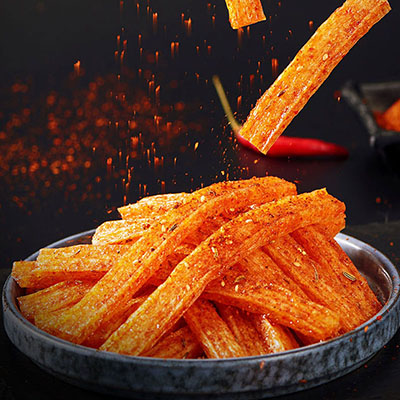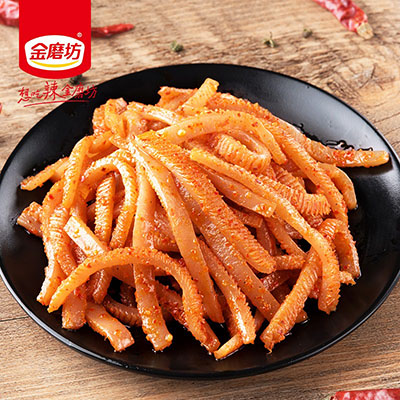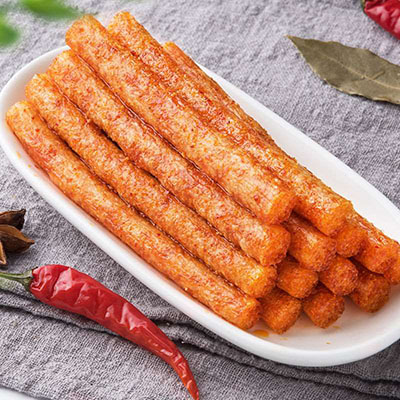The Spicy Rise of China’s Iconic Snack: The Story of Latiao (辣条)
In the pantheon of Chinese snacks, few have captured taste buds and cultural imagination quite like latiao (辣条), the chewy, spicy, and slightly sweet gluten strips that have become a national obsession. What began as a humble street food has exploded into a multi-billion-dollar industry, winning over everyone from schoolchildren to celebrities—and even finding fans overseas.
From Humble Origins to Snack Stardom
Latiao’s origins trace back to the late 1990s in Hunan and Sichuan provinces, where vendors experimented with mianjin (面筋), a wheat gluten-based product. Originally a cheap, filling snack sold near schools, its addictive combination of spicy, numbing, and sweet flavors—thanks to chili oil, Sichuan pepper, sugar, and MSG—quickly made it a hit. By the early 2000s, factories began mass-producing packaged versions, turning latiao into a convenience store staple.

A Cultural and Economic Phenomenon
Today, China’s latiao industry is worth over $10 billion, with brands like Weilong and Spicy Prince dominating supermarket shelves. Its popularity has transcended snack status, becoming a nostalgic symbol of childhood for millennials and Gen Z. Social media challenges, celebrity endorsements (even NBA star James Harden was seen snacking on it), and viral unboxing videos have further fueled its fame.
But latiao’s appeal isn’t just cultural—it’s economic. Many factories are based in rural areas, providing jobs and boosting local economies. Meanwhile, exporters have successfully introduced latiao to international markets, particularly in Southeast Asia, the U.S., and Europe, where adventurous eaters embrace its bold flavors.
Health Debates and Innovation
Despite its success, latiao has faced scrutiny over additives and hygiene standards, prompting brands to reformulate with cleaner ingredients (some even market organic or low-MSG versions). Innovators have also expanded the category, offering latiao-flavored chips, nuts, and even mooncakes—proving its versatility.Why the World Loves Latiao
For foreigners, latiao offers a thrilling introduction to China’s love of mala (numbing-spicy) flavors. Its chewy texture and fiery kick make it a unique alternative to Western snacks like beef jerky or gummies. As global interest in Asian snacks grows, latiao stands out as a bold, affordable, and quintessentially Chinese treat.

The Future of Latiao
With the rise of e-commerce and cross-border trade, latiao’s global reach is expanding. Could it become the next instant noodle or kimchi? One thing’s certain: this spicy, chewy underdog has already cemented its place in China’s snack hall of fame—and its journey is far from over.
Craving a taste? Grab a pack (if you dare!) and join the millions hooked on China’s most addictive snack.


